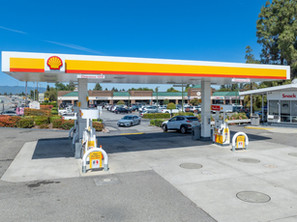top of page


Macy’s vs Nordstrom: A Comparative Analysis of the U.S. Market
Introduction: Macy’s, Inc. and Nordstrom, Inc. are two iconic American department store companies that have defined brick-and-mortar retail for decades. While Macy’s operates as a broad mid-market retailer (alongside its upscale Bloomingdale’s banner and beauty chain Bluemercury) with a focus on value and high-volume sales, Nordstrom positions itself as a premium fashion retailer known for quality merchandise and top-tier customer service. Both firms have navigated dramatic s
2 days ago25 min read


CVS Health vs Walgreens in the U.S. Pharmacy Market
A Tale of Two Pharmacy Giants: Walgreens vs. CVS in America’s Drugstore Market Ubiquitous Stores, Divergent Paths On opposite corners of countless American streets sit two familiar signs: Walgreens and CVS. These pharmacy giants dominate the U.S. drugstore landscape with a combined footprint of nearly 20,000 stores nationwide. Both chains are ubiquitous fixtures of daily life – a place to pick up prescriptions, grab a snack, or get a flu shot – yet behind their similar storef
5 days ago21 min read


Costco Wholesale’s U.S. Operations in 2025: Footprint and Performance
Real Estate Footprint Costco Wholesale’s U.S. real estate presence in 2025 is extensive yet highly focused. The company operates roughly 629 warehouse locations across the United States (including Puerto Rico) as of the end of fiscal 2025. These large-format warehouse clubs account for the vast bulk of Costco’s real estate footprint, totaling over 90 million square feet of operating floor space nationwide (up from 91.1 million sq. ft. at the end of 2024). Each warehouse is
Dec 513 min read


Homeowners' Insurance in the US: Outlook Through 2030
Introduction Homeowners' Insurance in the US Outlook is shaped by converging forces of economic trends, climate change, and evolving consumer needs. The U.S. homeowners’ insurance industry – a cornerstone of financial security for American households – is entering a period of moderate but steady growth through 2030, against a backdrop of significant challenges. Industry revenue, currently around $175–180 billion in 2025, is projected to surpass $200 billion by 2030. This equ
Dec 525 min read


Chicken Chains Spread Their Wings: A New Era for Fast-Food Chicken
The U.S. fast-food chicken restaurant industry, part of the limited-service restaurant category (NAICS 722513), has emerged as one of the most dynamic corners of quick service. As of 2025, it generates roughly $63.7 billion in annual revenue and employs about 775,000 people, with more than 150 businesses active nationwide. Growth has been robust in the post-pandemic recovery, with industry revenue expanding at an estimated 5.6% compound annual rate between 2020 and 2025, befo
Dec 329 min read


Mixed-Use Development Cost Breakdown for 2025 (Multifamily & Retail)
Illustrative picture - Mixed Use This case study provides a comprehensive guideline for understanding the full cost structure of smaller mixed-use developments in 2025. It outlines how materials, labor, land-related expenses, soft costs, and financing assumptions combine to shape the total development budget for a multifamily-and-retail project. By grounding the analysis in a real Atlanta-area project and comparing it to national benchmarks, the study offers a practical, data
Nov 3012 min read


Fertility Clinics Outlook: US Market Analysis Through 2030
The Fertility Center of Las Vegas, 5453 S Durango Dr, Las Vegas, NV 89113 The US fertility clinics market is entering a new decade with solid growth and evolving dynamics on both the consumer (B2C) and business (B2B) fronts. Demand for assisted reproductive services is rising as societal trends shift, and the industry’s structure is transforming with technological innovation and investment. This consulting-style analysis provides a comprehensive “Fertility Clinics Outlook”
Nov 3037 min read


A Storm Brewing in Commercial Real Estate: Insurance Costs Soar Across the U.S.
Not long ago, the cost of insuring an office tower or a shopping center was a background worry – a predictable line item in a deal budget. Today, it has surged to the forefront. Across the United States, owners of office high-rises, strip malls, warehouses and apartment complexes are opening their insurance renewal notices with alarm. Premiums are climbing at a historic pace, turning a once-stable expense into a volatile factor that can make or break a real estate deal. One M
Nov 2834 min read


Tunnel Car Wash Construction Cost Breakdown and Why a Feasibility Study Is Essential
How the Car Wash Industry Is Performing in 2025 According to the MMCG database, the U.S. car wash and auto detailing industry in 2025 generates around $20–21 billion in annual revenue , supported by roughly 220,000 employees across more than 60,000 businesses . Profitability is robust: average profit margins are in the mid‑teens (around 14–15% of revenue), which is high compared with many other service segments. Revenue has grown at a mid‑single‑digit compound rate over the
Nov 2512 min read


Legacy vs. Disruptor: Ford and Tesla’s American Real Estate Footprints Compared
Introduction: Two Automakers, Two Footprints In Dearborn, Michigan, Ford Motor Company’s century-old factories sprawl across the landscape – a physical testament to a legacy automaker built on vast industrial might. Meanwhile in Fremont, California and Austin, Texas, Tesla’s newer gigafactories rise like sleek warehouses of the future – a tech-born automaker’s take on car manufacturing. These two companies, one founded in 1903 and the other in 2003, occupy vastly different re
Nov 2429 min read


Walmart vs. Target: An Analytical Comparison of Two American Retail Giants
Introduction On any given day in the United States, a shopper can choose between Walmart’s no-frills supercenters or Target’s curated aisles. These two chains define much of the American retail landscape, yet they operate with distinctly different strategies and appeal to slightly different crowds. Both are ubiquitous – Walmart and Target each have national reach – but one emphasizes rock-bottom prices and massive scale, while the other banks on a more curated, style-focuse
Nov 2331 min read


Recreational Vehicle Manufacturing in the US: 2025–2029 Outlook and Forecast
Introduction and Industry Context The Recreational Vehicle Manufacturing in the US industry enters the mid-2020s at a crossroads of post-pandemic recalibration and emerging growth opportunities. After a historic boom in 2021 – when RV sales surged as Americans embraced road travel for safe, distanced recreation – the industry faced a cooldown due to economic headwinds. Higher interest rates, inflation, and wavering consumer confidence in 2022–2023 tempered demand, even as th
Nov 2135 min read


How Real Estate Reacts to Stock Value Decrease
Cycles of Boom and Bust: Stocks and Property Markets Stock market downturns and real estate cycles have long been intertwined. When equities plunge, the reverberations are felt across property markets – but not always in straightforward ways. A stock crash can sap wealth and confidence, yet it may also prompt shifts in capital flows and policy that counterintuitively buoy certain real estate segments . For example, the dot-com bust of 2000–2002 vaporized some $6 trillion in
Nov 1923 min read


Cost to Develop 1-Bedroom and 2-Bedroom Cabins in the U.S. (2025 Guide)
Developing a small cabin involves many variables, from construction method to location. Below is a comprehensive overview of costs for one-bedroom and two-bedroom cabins in the United States, comparing modular/prefabricated vs. stick-built methods, turnkey vs. non-turnkey approaches, regional cost differences (Northeast, South, Midwest, West), and the impact of rural/off-grid vs. suburban utility-connected sites. All costs are in USD, and ranges are provided where applica
Nov 1716 min read


Link Logistics Real Estate: Strategic Analysis
Concord Airport Business Park - 7045 Aviation Blvd NW , Concord, NC 28027 Link Logistics is a U.S.-based real estate company that specializes in logistics-focused industrial properties. Founded by Blackstone in 2019, the company owns, operates, and develops one of the largest portfolios of logistics real estate in the United States. As of mid-2025, Link Logistics manages over 500 million square feet of industrial space across more than 3,000 properties. Its portfolio includes
Nov 168 min read


Public Storage REIT – Strategic Asset Analysis for Investors, Developers, and Lenders
RV & Boat Storage - Illustrative facility, WA Introduction: Public Storage (NYSE: PSA) is the largest self-storage real estate investment trust (REIT) and a market leader with a broad national portfolio. This report provides a deep-dive analysis of Public Storage’s asset strategies – including redevelopment, stabilization, ground-up development, and opportunistic acquisitions – framed for three key stakeholder perspectives: REIT investors , private equity developers/investor
Nov 1613 min read


U.S. Fuel Prices Change Forecast 2026: Impact on Gas Stations’ Margins and Profitability
Valero - Benicia Refinery - 473 E Channel Rd, Benicia, CA 94510 Introduction Retail fuel prices in the United States have seesawed in recent years – surging to multiyear highs in 2022 and then easing through 2023–2024.[1] Looking ahead to 2026, the outlook points to a continued moderate decline in U.S. fuel prices overall, driven largely by cheaper crude oil and improving vehicle fuel efficiency.[1] However, this national trend masks important regional differences and busine
Nov 1414 min read


Feasibility Analysis: Single-Location Drug & Alcohol Rehabilitation Clinic (U.S.) in 2025
Into Action Recovery Center - 17300 Mercury Dr, Houston, TX 77058 1. Market Overview and Demand Drivers Industry Growth: The U.S. drug and alcohol rehabilitation clinic industry generated an estimated $5.3 billion in revenue in 2024 , following moderate growth (3.3% CAGR over 2019–2024). Looking ahead, industry revenue is projected to reach ~$6.4 billion by 2028 (3.9% CAGR over 2024–2028). The number of treatment businesses has expanded rapidly – over 6,200 clinics in 2024
Nov 1326 min read


The U.S. Accommodation and Food Services Sector: A Post-Pandemic Resurgence and Future Outlook
Explore how the U.S. hospitality industry is transforming in the wake of the pandemic—driven by digital innovation, shifting consumer preferences, and a resilient labor force. This in-depth analysis covers market dynamics, competitive pressures, cost structures, and forecasts through 2029, offering strategic insights for industry professionals and investors navigating the evolving accommodation and food services landscape.
Nov 1141 min read


Stretching Toward Prosperity: The Business of Yoga and Pilates Studios in America
1. Industry Overview: Market Size, Growth, and Consumer Trends In the United States, yoga and Pilates studios have grown from niche wellness outposts into a $14.7 billion industry. This market size, recorded for 2024, reflects a complex trajectory: explosive pre-pandemic growth, a sudden COVID-19 slump, and an ongoing recovery. In the five years leading up to 2024, industry revenue essentially flatlined – even falling by an annualized ~1.7% during the pandemic disruption. St
Nov 1043 min read
bottom of page
